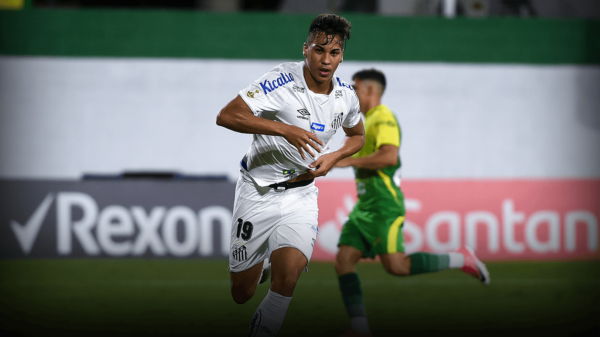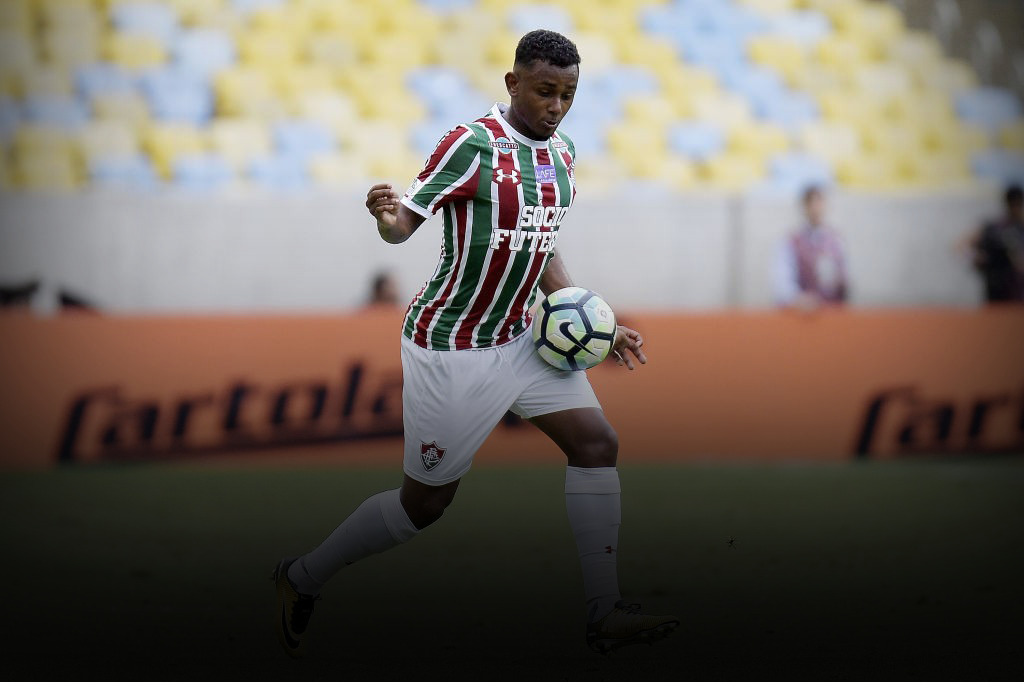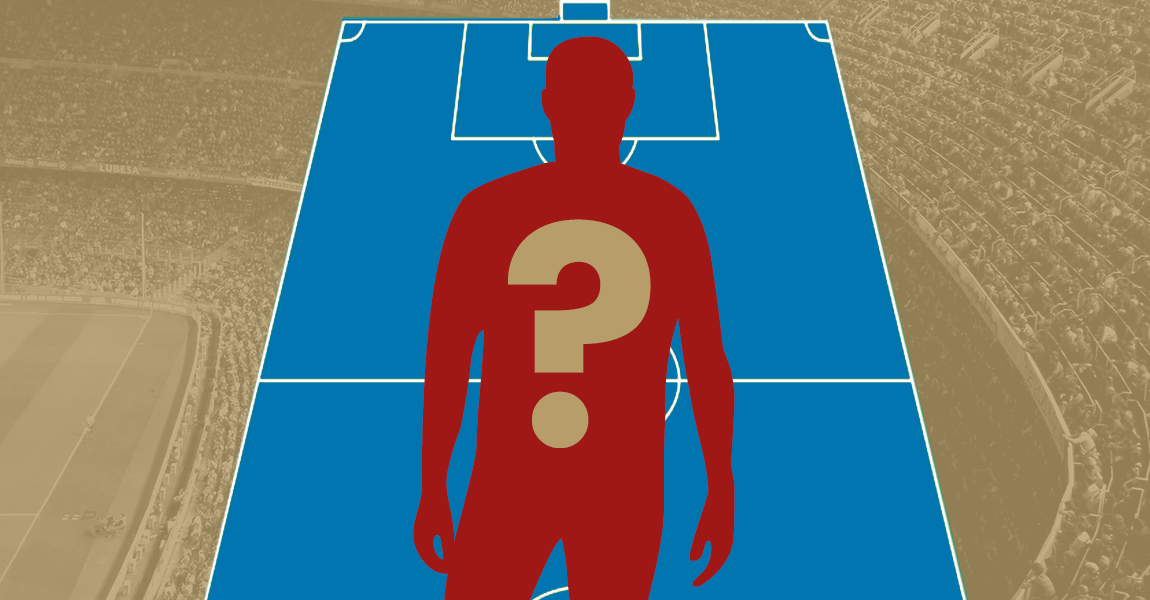In the light of Neymar’s injury, with the burden of attack now firmly on the shoulders of Fred & Jo, two players who don’t inspire much confidence, Nikhil Krishna analyses and ask what exactly has happened to the Brazilian striker that we’ve grown to adore.
For almost as long as time itself, the Brazilian national team have been synonymous with the most remarkably talented Strikers. For generations, Brazil supporters have spoken with utmost pride and confidence of their” No 9’s”, from the sublime finesse of Romario and to the all round lethalness of “Il Fenomeno” himself, Ronaldo.
Those expecting this rich “tradition” of sorts to continue with this generation of Brazil have been disappointed in a huge way. As the hosts of the 2014 World Cup, instead of packing a squad with a gifted striker they have had to stick with the bumbling Fred and Jo. The round of 16 match which saw them scrape through on penalties against Chile (tactical analysis here) was just another indicator of their inadequateness to the side. Fred started that game and put in another pitiful performance as he personified unispiration for over 65 minutes. Jo came on for him and was not better by much, missing a couple of good opportunities to score. The quarter finals were no better as Fred struggled against a resolute Colombian defence (tactical analysis here).
The worst part is that it hasn’t just been their form at the World Cup finals that was indifferent. With utmost respect to both of them, the truth is they have had career paths that have well and truly stalled over the last year or two, and didn’t have to do anything brilliant to push for a place in the national side (bar slight competition from a now injured Damiao). They were instead settled for; an almost unimaginable predicament for Brazil whose very nickname “A Seleção” means “the Select”. It begs you to ask the question, what on Earth has happened to the Brazilian striker?
Well, firstly taking a look at other potential “could have beens” for this year’s World Cup gives you a rough measure of the situation.
Adriano Leite Ribeiro was once arguably the most talented footballer on the planet. He had it all, pace, power and skill as he ruled and devastated defence after defence in the Serie A with Internazionale and Parma when he was just in his early twenties earning the nickname “The Emperor”. Talent wise, he was well and truly set as Ronaldo’s heir, after an outstanding 2005 Confederations Cup which saw him finish as the top scorer, and Brazil as champions. However after the disappointing 2006 World Cup, Adriano’s international career declined due to a series of poor club performances and personal combats with alcoholism and weight gain off the pitch as he seemingly fell out of love with the beautiful game. His career path spiralled and crashed, as he hardly achieved a third of the potential he promised. Even today, Brazilians will speak with a tear in their eye on thinking about “what could have been” and the glory he could have brought to Brazil. At 32, had his career mapped out as many thought it would, he would have most probably been at the centre of the park this World Cup 2014 helping Brazil lift their 6th world cup.
Another to join Adriano in the boat of unfulfilled talent is Alexandre Pato. At just 17, this forward showed so much class with quick feet, superb technical attributes and a fantastic eye for goal. He was at AC Milan, well and truly a teenage superstar. Just as Adriano, Pato had so much expected of him in the Brazilian colours as the nation truly believed that the number 9 shirt at the home World Cup in 2014 was reserved for him. Perhaps the burden was far too much, for as the years progressed injuries and other off field controversies left the youngster a shadow of his old self. When he was fully fit he continued to show class on occasion, take for instance the brilliant goal he scored against Barcelona within just seconds of the game beginning. But those moments of brilliance became rarer and rarer as Milan eventually grew fed up with him, and shipped him off to Corinthians so that he could resurrect his career. Currently on loan at Sao Paolo after the fans began to lose hope in him, the now 24 year old will have kept asking himself where it went wrong for him as he can only sit at home and watch the Brazil team in their search for glory. At 24, the one thing he has on his hands is time, and potentially redeem his great potential and fulfill what was expected of him.
It isn’t just Adriano and Pato. Even the likes of Luis Fabiano who was the best Brazilian at the 2010 World Cup, and winger/centre forward Robinho, both failed to live up to the hype and expectations surrounding their names. Perhaps, the key word there is “expectations”. As a nation, Brazil has an incredible demand of standard to be the best. Anything less than the great talent they’ve been accustomed to is considered to be a disappointment. After all when you have greats such as Ronaldo and Romario as your scale of measurement, you’re always going to come up short. Only the extraordinary few like Neymar have been able to actually live up and carry the burden of expectations (thus far). This is of course the cruel nature of expectation of sport, but it’s a fact that must be faced for it’s these expectations that push players to keep stepping up to the next level.
Another important factor to take into consideration is the amount of competition from the previous generation itself which didn’t allow young stars like Diego Costa to phase themselves into the national team. Interestingly enough, at the present, the so called “competition” for the role of a striker is virtually nonexistent. People began to realise that not everyone could be Ronaldo, so their focus shifted to the other areas of the pitch. The current generation were exposed to the other 10- positions in the pitch, as the concentration shifted from the striker. The change in thinking bore its fruit as you can see the likes of David Luiz and Thiago Silva, two proper centre backs who display certain flair at the helm of defence almost “Brazilianizing” their positions.
There is, of course, another aspect of this drying up of strikers, i.e the tactical aspect. Football is a far cry from its 4-4-2 days. Nowadays, seeing two strikers play up front has become a rarity. Since the dawn of the new millennium, a vast number of teams have favoured the extra man in midfield, sacrificing the luxurious pacey and flair filled poacher (almost the hallmark Brazilian striker) in favour of a more creative midfielder. The remaining man upfront had to evolve into a target-man style striker, in the side primarily for his strength and hold up with goal-scoring prowess, as the brief of creative runs and dribbles was left to the midfielders.
The focus shifted almost overnight from the front 2, to the “3” men behind the strikers. The individualist strikers amongst the likes of Pippo Inzaghi, Raul and Ruud van Nistelrooy were overshadowed by creative attacking midfielders such as Totti, Juan Riquelme and Zinadene Zidane. The creativity and orchestrating licence that was once given to the number 9 has now been distributed amongst the No.7, No.10 and No.11. This fact is perfectly echoed looking at the two best players of this generation, Cristiano Ronaldo and Lionel Messi, both of whom despite their positional versatility are very much “inside wingers or inside forwards”. Even Neymar, Brazil’s best player of the current generation falls under the same category. Strikers were forced further and further to focus on the physical aspect of their game to help promote the overall cohesiveness of the team, over their individuality and flair.
The likes of a hard working defensive minded yet creatively adept attacking midifelders of Oscar and Willian , two important members in Brazil’s squad would have been close to unimaginable in the last generation. When was the last time you saw Ronaldo or Ronaldinho track back and help their defence? The fact is that in this modern era of pragmatism, all 11 players on the pitch have had to pull their weight defensively. It’s simply not enough in the modern game to be a goalscorer any more, you have to have a contribution to the team’s overall game as well; a universality of roles has thus emerged. No one player could be given a free pass. Jo, Fred and Damiao are all very similar in target-man style strikers. The likes of Spain and Germany have been able to maintain a consistent diversity of crops of strikers ranging from the physical likes of Gomez and Llorente to the poachers likes of Muller and David Villa. Brazil cannot claim to have been able to do the same.
The promising variety they had in the form Alexandre Pato and Robhino have been victims of this, finding themselves extremely unsettled when playing alone up front, unable to contribute as much to the overall cohesiveness of the team and thereby falling out of favour with fans and coaches alike. While the other positions began experiencing a greater shift in quality, the quality of strikers coming through the youth academies began to decline. Even when an exceptional few talents were discovered, the hype and hysteria served as a great distraction. As a result Brazil have had to turn to a kind of striker that was almost unheard of to them in order to keep up with footballing evolution. Clearly, the shift in style hasn’t been smooth.
This is merely a cycle in development which all footballing nations go through. Hopefully for Brazil, the next crop of youngsters will bear much greater quality of strikers. In light of Neymar’s unfortunate injury, the already overbearing burden on the backs of Fred and Jo only increases with each passing day. For now though, all the nation can do is stick by them and hope that they can deliver World Cup glory. Beyond that, there has to be a major revamp of thinking at the grassroots level for the future of the Brazillian striker.
- Tactical Analysis | PSG 3-2 Barcelona : Marquinhos, Luiz, and Motta steal the show as Messi is thwarted - October 1, 2014
- Tactical Analysis | Arsenal 1-1 Tottenham Hotspur: Negative Spurs, wasteful Arsenal - September 28, 2014
- Juventus Tactical Preview: How will Massimiliano Allegri’s side set up in the 2014-15 season? - August 29, 2014


























































